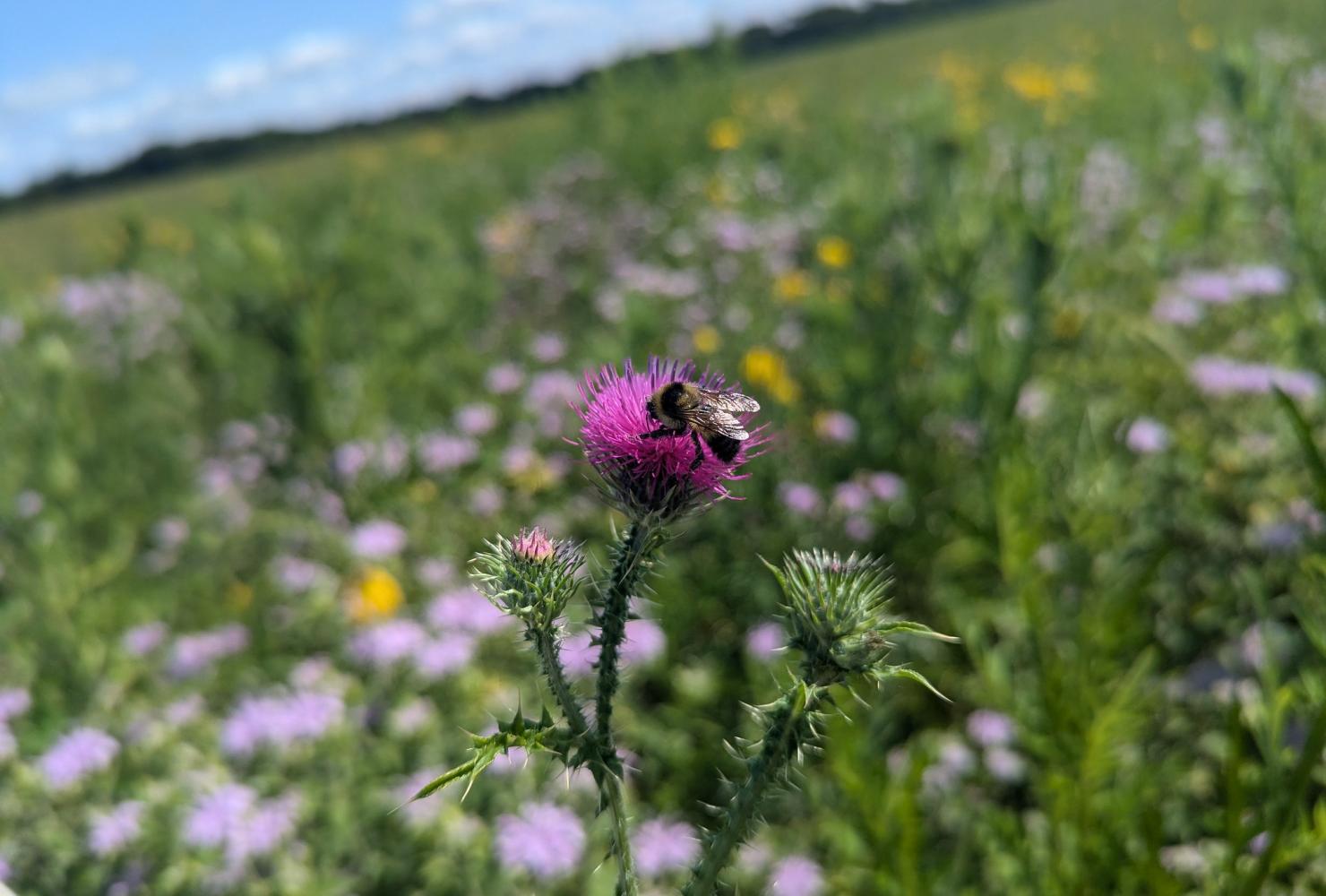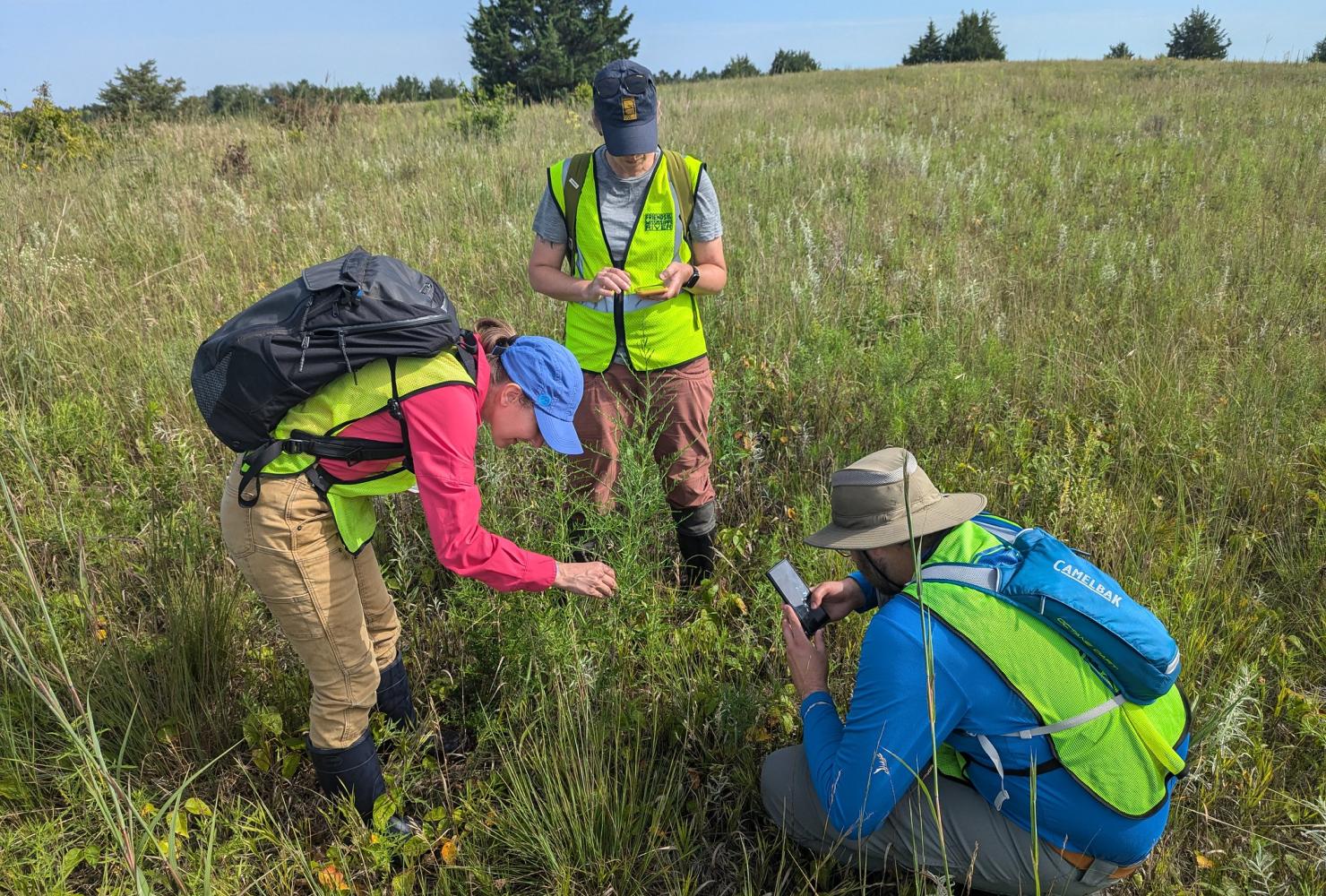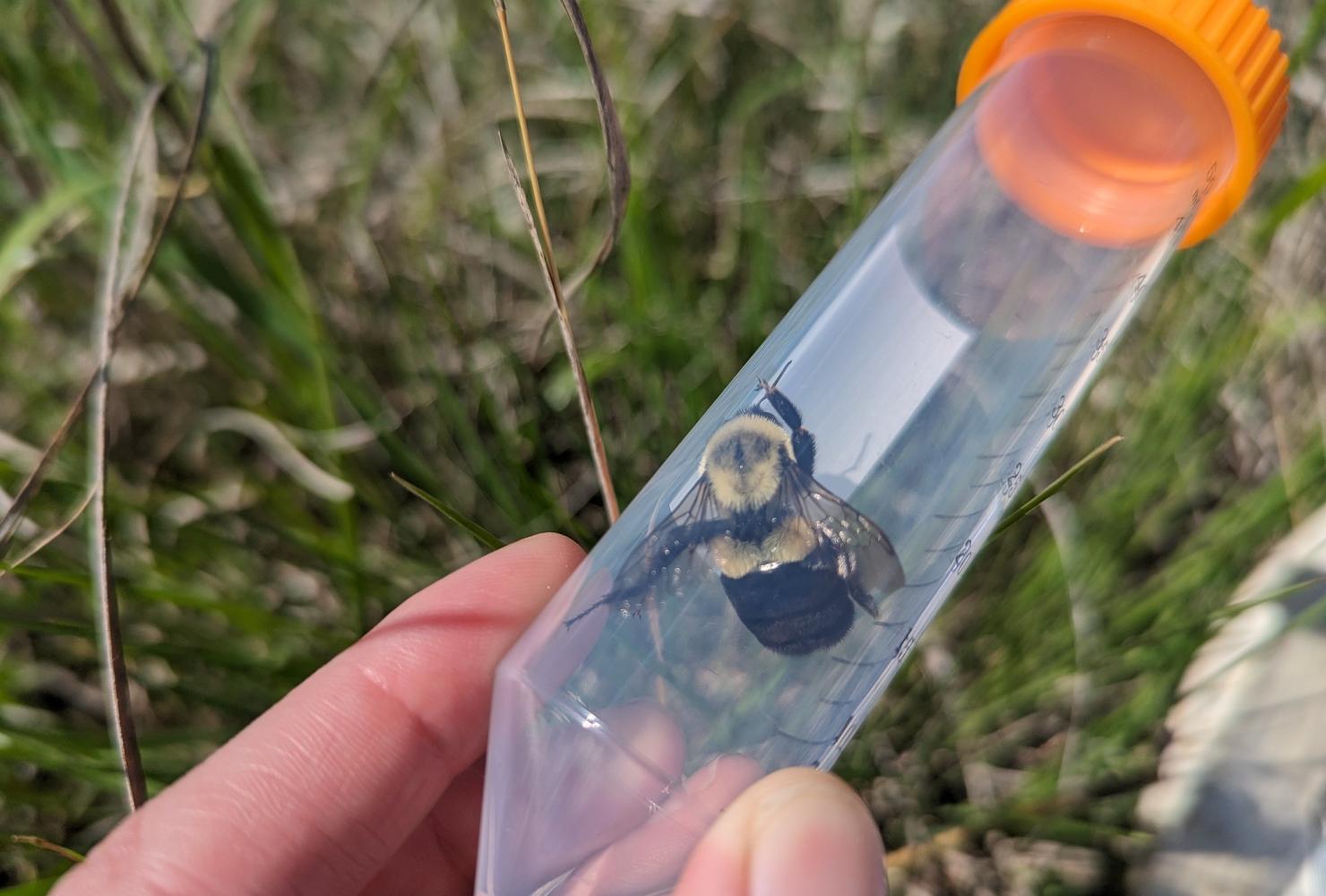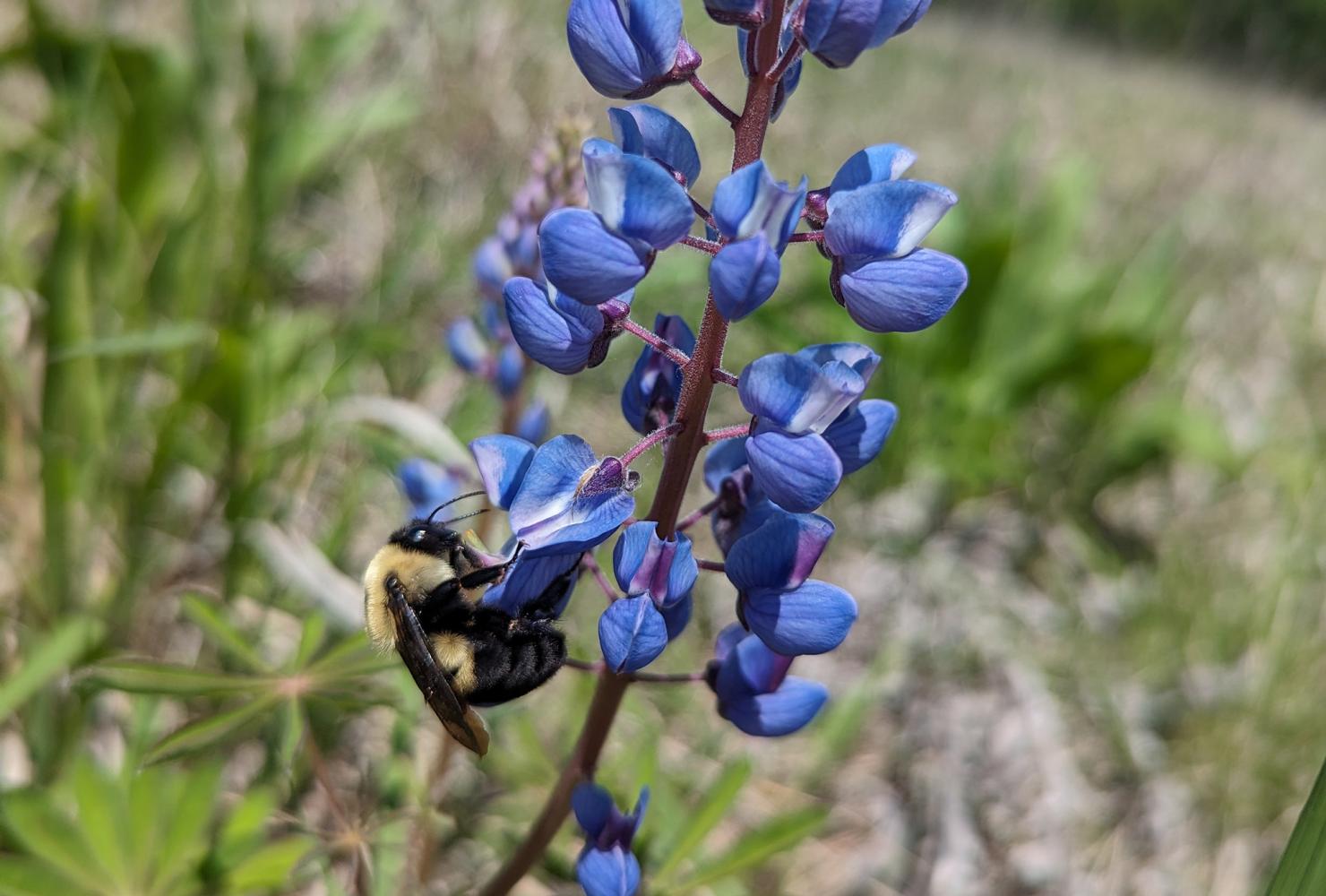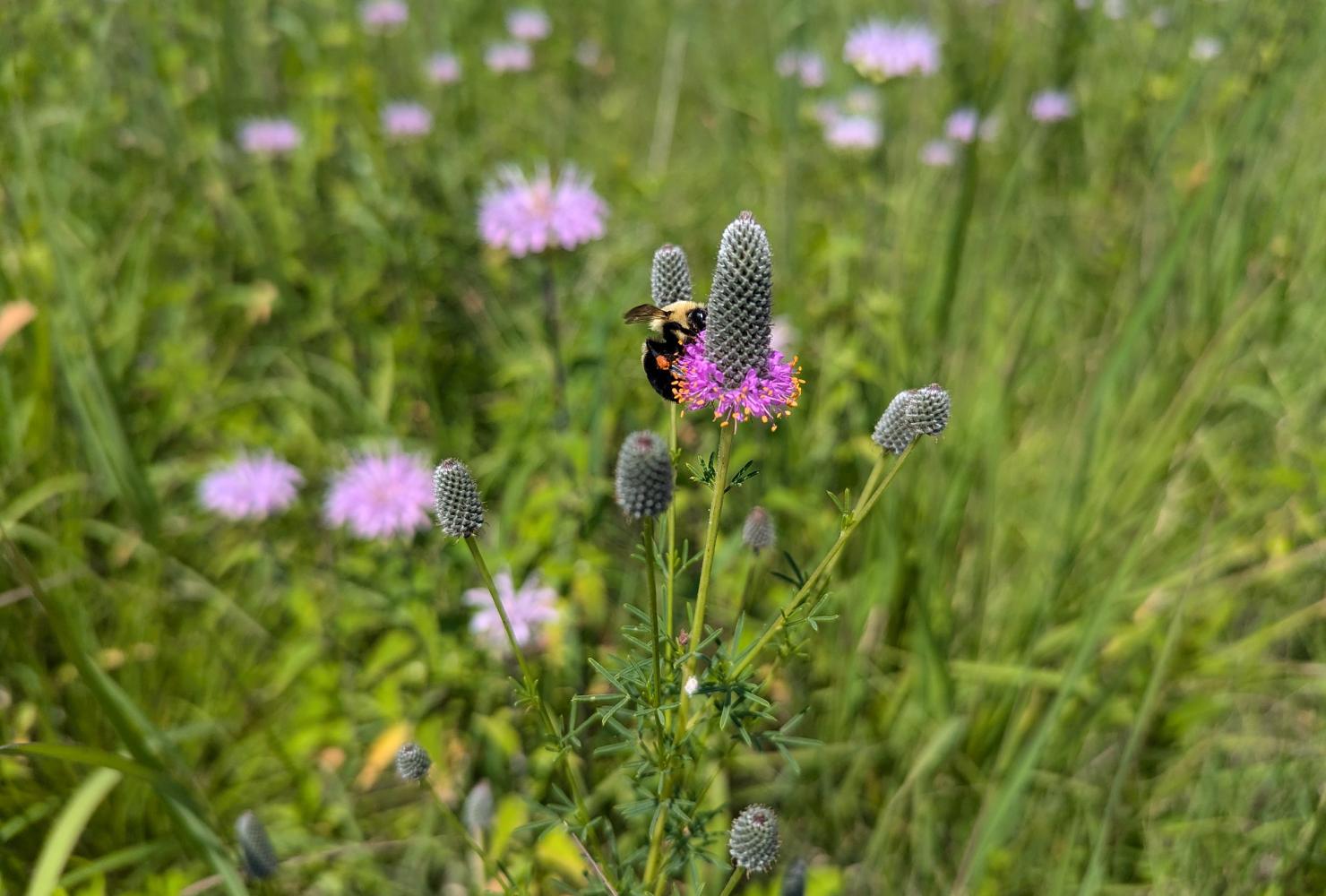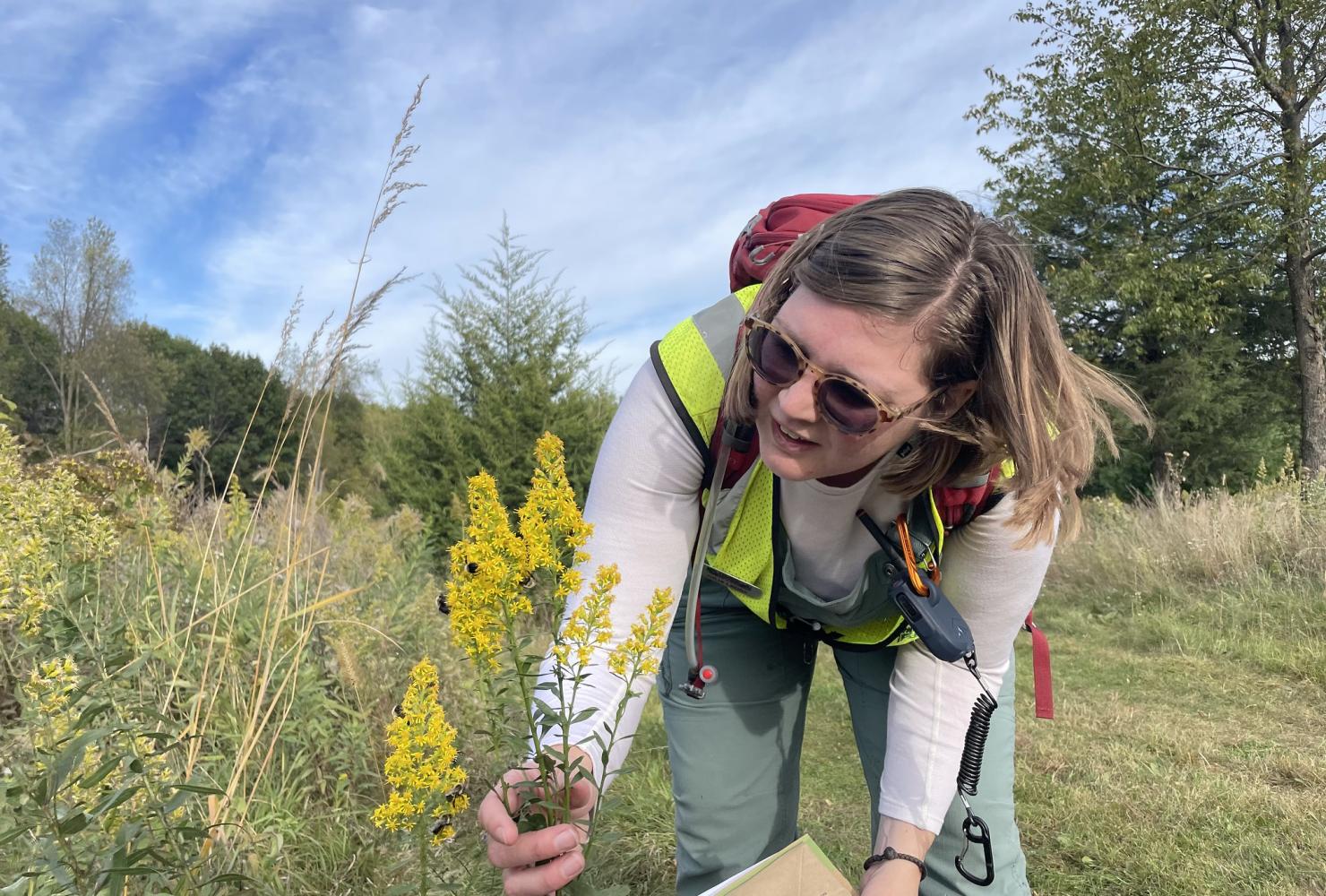Bumble bee habitat: What we've learned from monitoring (so far)
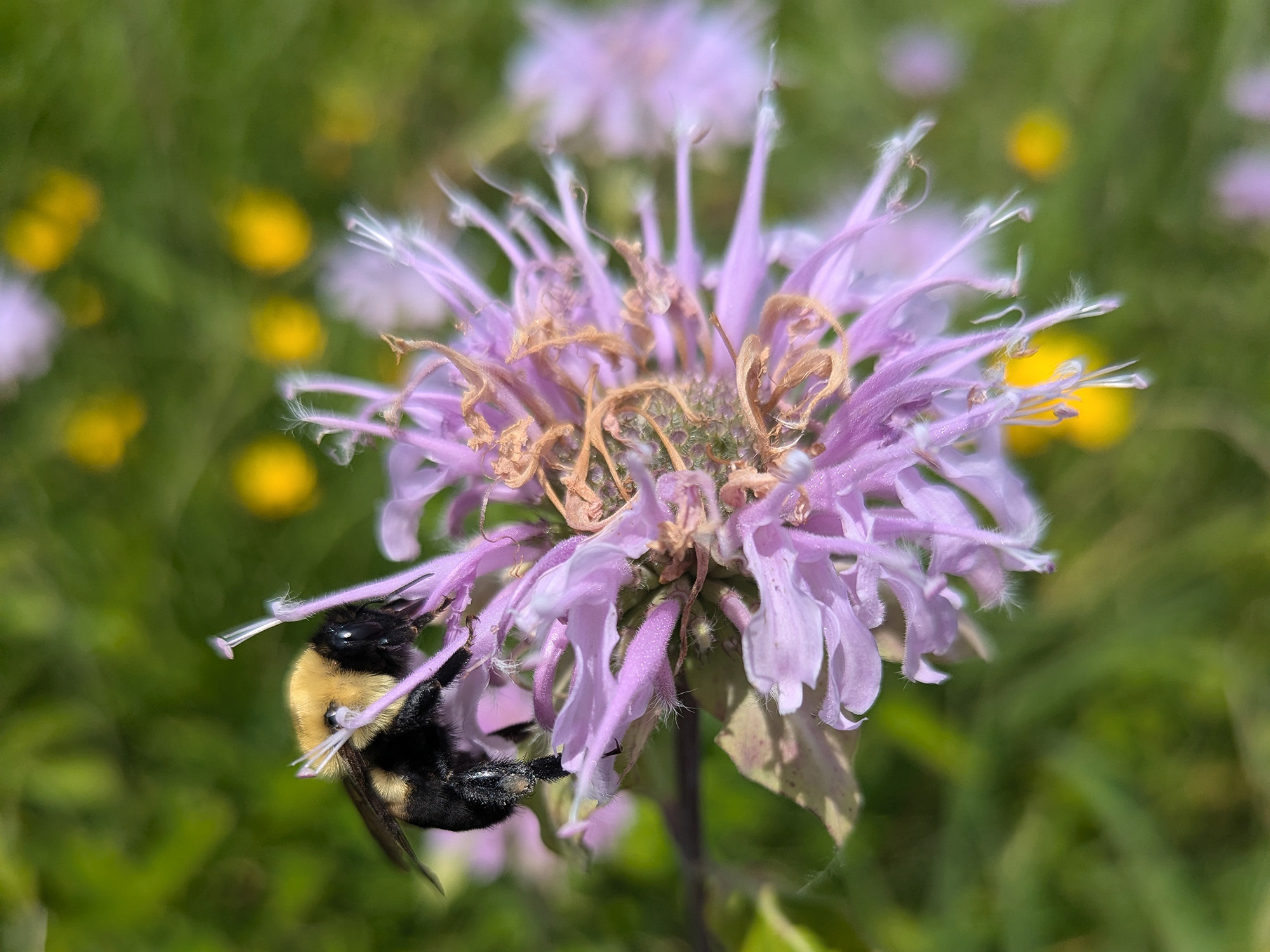
FMR documented more than 800 individual bumble bees in 2024 during our monitoring, including this brown-belted bumble bee on bee balm.
How can we make the best possible habitat for bumble bees? That's the gist of the question Friends of the Mississippi River Pollinator Biologist Dr. Julia Leone and our Land Conservation team are trying to answer.
In 2024, she and her team conducted 75 bumble bee and butterfly surveys across FMR's network of habitat restoration sites. That data collection is part of one of FMR's latest multi-year research projects and will give us insight into a few key factors related to creating and stewarding bumble bee habitat: Do bumble bees prefer remnant or restored prairies? How diverse should seed mixes be? What seeding method works best?
FMR still has another data collection field season coming up in 2025. (Let us know if you'd like to join us as a volunteer pollinator monitor via the interest form at the bottom of this page!) After that, we'll be able to share our full findings and translate them into actionable guidance for restoration professionals at FMR and beyond who are trying to save bumble bees from their precipitous decline.
As Julia finished crunching numbers from 2024, I talked with her about the Land Conservation team's preliminary findings, bumble bees' favorite flowers and more.
Q&A with FMR Pollinator Biologist Julia Leone
Ellie: How many bumble bees did you and your team see this summer? Any especially exciting sightings for you?
Julia: We observed just over 800 bumble bees during the 2024 growing season, from May through September. The most commonly observed species were the common eastern (Bombus impatiens) and brown-belted (Bombus griseocolis) bumble bees.
Minnesota is home to 24 species of bumble bees. Many of these do not typically occur in the Twin Cities region, and several have not been documented in Minnesota in recent years. We recorded 14 of these species across the seven sites we surveyed, including several species thought to be in decline: the federally endangered rusty-patched bumble bee (Bombus affinis), the yellow bumble bee (Bombus fervidus) and the American bumble bee (Bombus pensylvanicus). We also documented several of Minnesota’s cuckoo bumble bee species. (Learn more about our native bees.) This is high bumble bee diversity for our area!
Ellie: The gardener in me has to ask: Did the bumble bees have favorite flowers?
Julia: We saw the most bumble bees on field thistle and the aptly named bee balm. Later in the season, we also observed a lot of bumble bees on Canada and grass-leaved goldenrods. Overall, bumble bees foraged on over 40 species of native plants across the summer.
Ellie: For this research project, you've been looking at bumble bees only. Why is that?
Julia: Our focus on bumble bees is driven by a desire to understand habitat requirements for the federally endangered rusty-patched bumble bee. We know that several other common bumble bees are also likely in decline and need better documentation and understanding. Another benefit of studying bumble bees is that they can be identified non-destructively in the field. Many of Minnesota’s other 500+ species of native bees require lethal capture and microscope identification.
Ellie: What have you seen so far as you've compared remnant and restored prairies?
Julia: In 2024, we surveyed 12 paired units at three of our sites, and we found nearly three times as many bumble bees in restored prairies as compared to remnant prairies, or prairies that have remained a prairie since before European colonization. The number of bumble bee species was also higher in the restored prairies we looked at.
To me, that's good news! It signals that restorations are working for bumble bees, including the federally endangered rusty patched bumble bee, which we were so excited to find at two separate FMR restoration sites.
Of course, these preliminary findings don't diminish the importance of conserving remnant prairie. With so much prairie lost, preserving remnants remains crucial. We hope our research will provide insight into how to better maintain and manage those remnant prairies.
Insect patterns can be highly variable from year to year, so we could see this trend change once we complete another year of data collection in 2025. Long-term data sets are important for this reason. We are excited that, in addition to our own research, we are participating in a new U.S. Geological Survey-led long-term monitoring project tracking trends in rusty-patched and other bumble bee species across a wide range of habitats and geographies.
Ellie: How were you able to test seed mix diversity and seeding techniques?
Julia: Our ecologists decided to set up an experiment when FMR began restoring a 160-acre soybean farm into prairie at William H. Houlton Conservation Area in Elk River. They split part of the restoration area into 30-acre units. To test seed diversity, each unit was seeded with 30, 50 or 70 native plant species. FMR also varied broadcast versus drill seeding techniques on the units as well.
Broadcast seeding scatters seeds across the surface of a site by hand or with light equipment. When done on a large scale, it can be more time-consuming but also mimics the way seeds are naturally deposited on the soil surface. Drill seeding, on the other hand, uses equipment to plant seeds at a set depth and distribution, which can result in higher germination rates but also have a greater impact on soils.
That was back in 2016, which shows you FMR has been committed to carrying out restoration research for a long time. (Check out some of our other projects.) Now, nearly 10 years later, the prairie is well-established and we get to collect data to find out if those different factors affect our restoration efforts and the pollinator community.
Ellie: I would imagine higher seed mix diversity would mean higher diversity of bumble bees. Is that what you've found so far?
Julia: Preliminary results from this year suggest that the number of bumble bee individuals was higher in units seeded with a higher diversity of species. But we actually didn't find more bumble bee species diversity.
This shouldn’t be much of a surprise. Bumble bees are generalist foragers, meaning that they collect pollen and nectar from a wide variety of plant species. We don’t find specialist relationships where certain bumble bees only forage on certain plant species, as is the case with some other native bees. This accounts for a similar bumble bee diversity across seeding rates. However, plant diversity is important even for generalist foragers since it helps ensure that food resources are available across the entire growing season.
Ellie: What about those two different seeding techniques? Did you see a difference there?
Julia: We found more individual bumble bees in drill-seeded units compared to units where seed was broadcast. Our findings suggest that drill seeding provides a result that is at least as good or better than broadcast seeding for bumble bees.
This is the kind of finding that, if we see similar results again next year, could inform how we and others approach this aspect of prairie restoration. FMR planted nearly 3,000 pounds of seeds in 2024. That's over an actual ton! Data-driven guidance about how these seeding practices are impacting pollinators would be so valuable.
This finding could also help conservation practitioners budget effectively since drill seeding typically costs less than broadcast seeding. The use of drill seeding at suitable sites could free up money to invest in higher-diversity seed mixes for a net benefit for bumble bees.
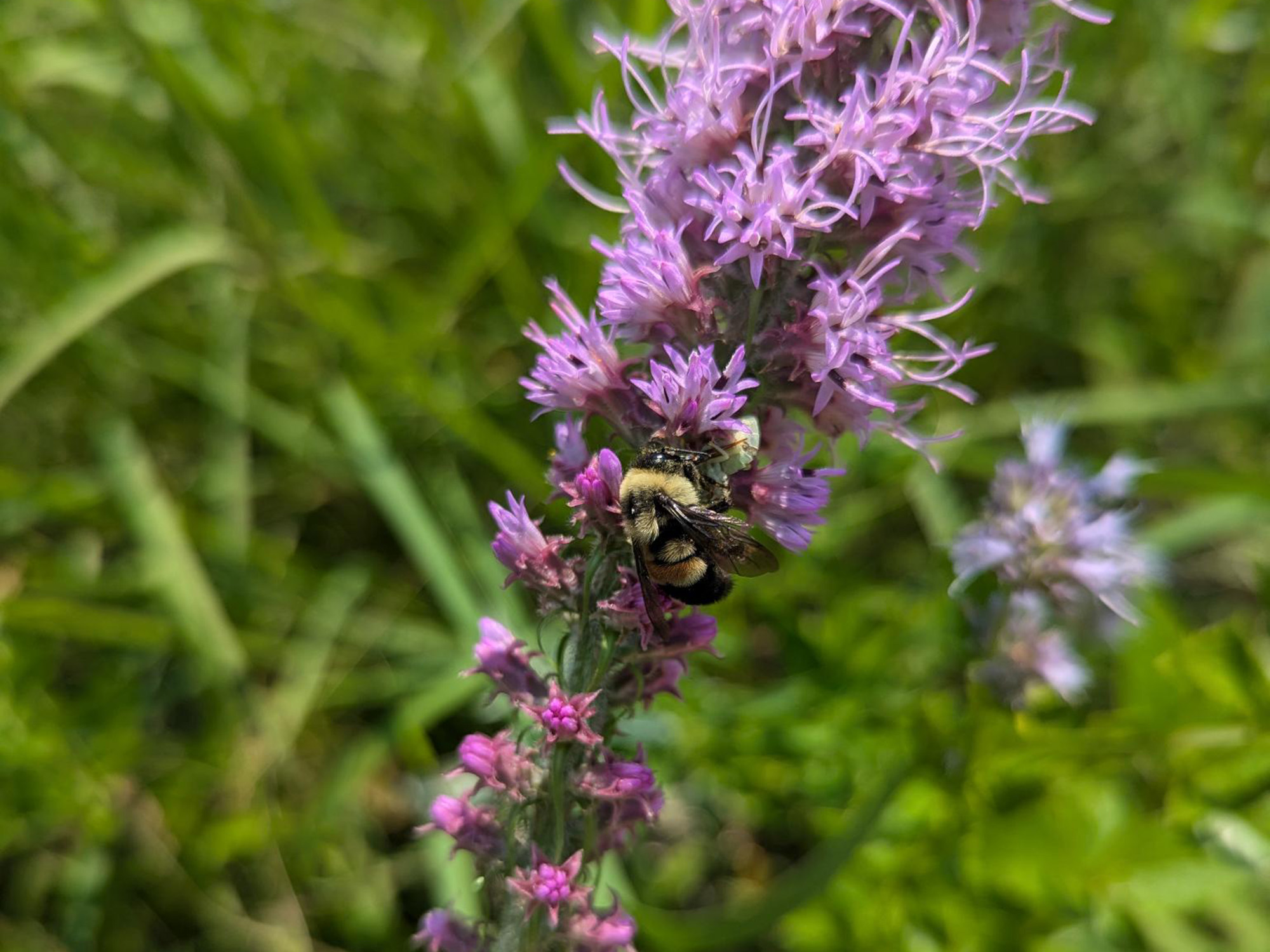
Look closely! You'll see more than our rusty-patched bumble bee on blazing star in this photo...
Ellie: Tell us about an interesting day in the field.
Julia: After almost two months of bumble bee surveys in 2024, I had nearly despaired of finding any rusty-patched bumble bees at our sites.
Then, on a humid day in late July, at the beginning of a new site survey, I spotted one! A male, apparently foraging on a large purple blazing star near a wetland edge. I immediately pulled out my phone to try to get some photos before it flew off. As I moved in closer, and the bee remained motionless, I realized that it was actually dead. Upon further inspection, it turned out to be in the jaws of an assassin bug nymph!
This may not sound like a fun find, but it was such an amazing picture of nature being nature that I remember it fondly. Every federally endangered species has a recovery plan, and the goal of every recovery plan is to eventually restore the species to a place of stability so that it no longer needs special protections. So, while we have important work to do now to learn more about how to bolster populations of rusty-patched and other declining bumble bees, I look forward to seeing it someday restored more prominently to the food chain.
In other words, a rusty-patched bumble bee being eaten by another native prairie bug on a hot summer day is just the sort of thing I'd like to see more of in the future, when I hope there's once again an abundance of rusty-patched bumble bees around to be eaten.
Get involved
Want to help bumble bees and other pollinators too?
Check out our tips for supporting pollinators, or sign up below if you'd like to know when we have openings in our volunteer pollinator monitoring programs.
Thanks to our funders
Funding for this project was provided by the Minnesota Environment and Natural Resources Trust Fund as recommended by the Legislative-Citizen Commission on Minnesota Resources. This project was also funded by the National Fish and Wildlife Foundation. Surveys at our corporate restoration sites were supported by 3M and Flint Hills Resources.
